For every like, there's a dislike.
That's as true in fantasy baseball as in any walk of life, and being that Tuesday was my "sleepers" day, today, conversely, let's shift focus to the players I'm avoiding in drafts.
As always with a list like this, every one of the 10 names on this list is a player I'm willing to roster this season, at a certain cost. Based upon what they might provide in 2023, coupled with what the early average draft position (ADP) trends -- both in ESPN leagues and off-site -- indicate, each is too pricey for my tastes.
So, let's take a look at the guys I'd love for you to draft on your rosters, so that I don't have to deal with them.
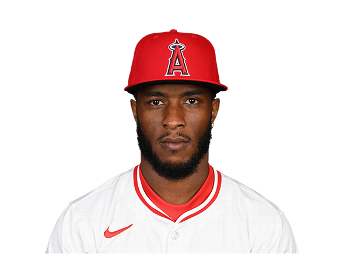 Tim Anderson, SS, Chicago White Sox: I've never been a big believer in Anderson, which is easier to say when you're ranking for points leagues, rather than rotisserie formats. Still, his 2022 raised a few warning flags for either format. Anderson dealt with multiple injuries, the first a groin issue that hampered his swing, then surgery to repair a sagittal band tear on his left middle finger that ultimately ended his season in August. He also showed minimal recovery of the lost Statcast sprint speed he exhibited in 2021, his 2022 rate placing in the modest 76th percentile, while his .255 BABIP on ground balls -- remember that speed is integral to his legging out infield hits -- represented a two-year downturn and his second-lowest number in his career.
Tim Anderson, SS, Chicago White Sox: I've never been a big believer in Anderson, which is easier to say when you're ranking for points leagues, rather than rotisserie formats. Still, his 2022 raised a few warning flags for either format. Anderson dealt with multiple injuries, the first a groin issue that hampered his swing, then surgery to repair a sagittal band tear on his left middle finger that ultimately ended his season in August. He also showed minimal recovery of the lost Statcast sprint speed he exhibited in 2021, his 2022 rate placing in the modest 76th percentile, while his .255 BABIP on ground balls -- remember that speed is integral to his legging out infield hits -- represented a two-year downturn and his second-lowest number in his career.
Perhaps Anderson is correct that the groin injury was entirely responsible for his diminished production, but I don't think he's quite worth his asking price thus far.
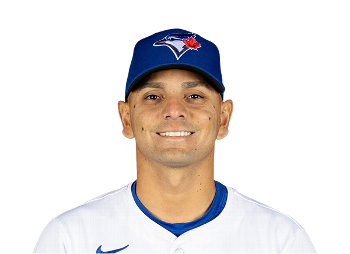 Andres Gimenez, 2B, Cleveland Guardians: He was one of the best defenders in baseball in 2022, fueling his everyday role, and has elite speed that makes another 20-steal season likely. He should have little trouble again turning in a top-10 rotisserie second baseman's stat line. With the bat, however, almost everything went right, most notably the 40-point differential between Gimenez's batting average (.297) and Statcast expected batting average (.257), the fourth-widest gap in that direction among qualifiers. Plus, his batted-ball metrics (36th percentile Statcast hard-hit and 33rd percentile barrel rates) don't portend a repeat of his 17 home runs.
Andres Gimenez, 2B, Cleveland Guardians: He was one of the best defenders in baseball in 2022, fueling his everyday role, and has elite speed that makes another 20-steal season likely. He should have little trouble again turning in a top-10 rotisserie second baseman's stat line. With the bat, however, almost everything went right, most notably the 40-point differential between Gimenez's batting average (.297) and Statcast expected batting average (.257), the fourth-widest gap in that direction among qualifiers. Plus, his batted-ball metrics (36th percentile Statcast hard-hit and 33rd percentile barrel rates) don't portend a repeat of his 17 home runs.
He's a solid, arguably top-100 caliber rotisserie pick, but even there he's going 2-3 rounds sooner, and in points leagues is more of a mid-range middle infielder.
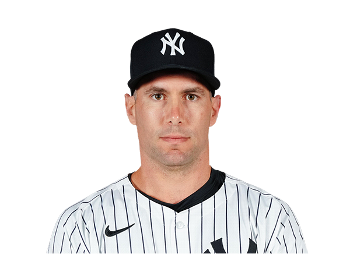 Paul Goldschmidt, 1B, St. Louis Cardinals: If we're talking about BA-xBA differentials, Goldschmidt's league-leading 56 point gap (.317 versus .261) was easily the league's largest in either direction, and let's also stress that the 52-point gap between his actual wOBA (.419) and expected wOBA (.367) was also the league's widest. To be fair, Goldschmidt is an outstanding player, an unquestionable top-50 performer in any format. Nevertheless, he's going 23rd overall in either ESPN points-based or National Fantasy Baseball Championship (NFBC) leagues thus far in March, which is too pricey for my tastes for a player who saw a lot of things go right last year.
Paul Goldschmidt, 1B, St. Louis Cardinals: If we're talking about BA-xBA differentials, Goldschmidt's league-leading 56 point gap (.317 versus .261) was easily the league's largest in either direction, and let's also stress that the 52-point gap between his actual wOBA (.419) and expected wOBA (.367) was also the league's widest. To be fair, Goldschmidt is an outstanding player, an unquestionable top-50 performer in any format. Nevertheless, he's going 23rd overall in either ESPN points-based or National Fantasy Baseball Championship (NFBC) leagues thus far in March, which is too pricey for my tastes for a player who saw a lot of things go right last year.
Bear in mind, too, that Goldschmidt's Statcast sprint speed has also been in year-over-year decline, to the point that he ranked in the 26th percentile last year, which means last season's seven steals are probably more realistic than his 12 from 2021.
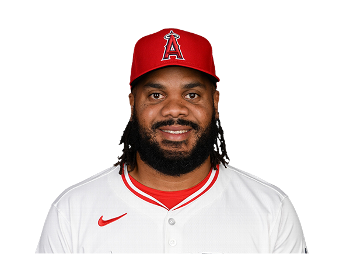 Kenley Jansen, RP, Boston Red Sox: The epitome of slow-working relief pitchers, Jansen's tempo last season, per Statcast, was the third-slowest with the bases empty and slowest with runners on base -- with numbers that would have quite certainly been a few seconds beyond the new pitch clock's limits. That requires noticeable adjustment, and considering Jansen no longer has his 2014-17 peak velocity and showed a small downturn in terms of both ground-ball and hard-hit rates (as well as average exit velocity), it's a legitimate concern.
Kenley Jansen, RP, Boston Red Sox: The epitome of slow-working relief pitchers, Jansen's tempo last season, per Statcast, was the third-slowest with the bases empty and slowest with runners on base -- with numbers that would have quite certainly been a few seconds beyond the new pitch clock's limits. That requires noticeable adjustment, and considering Jansen no longer has his 2014-17 peak velocity and showed a small downturn in terms of both ground-ball and hard-hit rates (as well as average exit velocity), it's a legitimate concern.
He's got the contract and the track record to be a widely regarded lock for 30-plus saves, but he's also 35 and now facing more questions than some of the other "back of the top 10" RP types, many of whom have electric, strikeout-generating stuff. Jansen just isn't a top-10 fantasy closer for me.
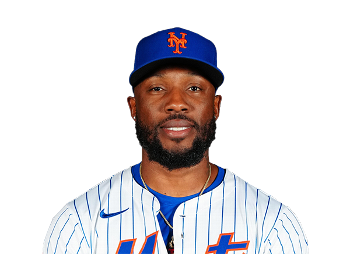 Starling Marte, OF, New York Mets: His recent injury history, coupled with the fact that he's now a 34-year-old who derives a good amount of his fantasy value from his stolen bases, has become a mounting concern. A rib fracture cost him five weeks of 2021, a partial fracture of his right middle finger cost him nearly a month's time at the end of the 2022 regular season, and core muscle surgery initially threatened his 2023 Opening Day status before he returned to action early during the Grapefruit League season.
Starling Marte, OF, New York Mets: His recent injury history, coupled with the fact that he's now a 34-year-old who derives a good amount of his fantasy value from his stolen bases, has become a mounting concern. A rib fracture cost him five weeks of 2021, a partial fracture of his right middle finger cost him nearly a month's time at the end of the 2022 regular season, and core muscle surgery initially threatened his 2023 Opening Day status before he returned to action early during the Grapefruit League season.
Marte's sprint speed, like Goldschmidt's, has been in a pattern of decline with his three worst rates coming in the last three seasons. He also gave back a good amount of the contact gains he exhibited during his great 2018-19 run, which is particularly problematic for those of us in points leagues. He's still a good building block in rotisserie leagues, but would probably cost you a top-75 pick to acquire, which is too exorbitant a price in my estimation.
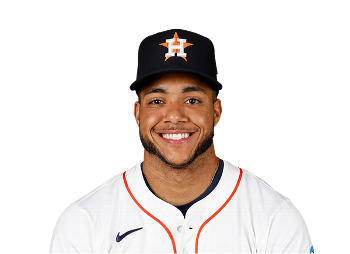 Jeremy Pena, SS, Houston Astros: He had a great rookie year, between becoming only the fifth rookie shortstop in history with at least 20 homers and 10 stolen bases and earning both American League Championship Series and World Series MVP honors, not to mention proving a more-than-adequate replacement for departed free agent Carlos Correa. In fact, Pena's WAR, 4.9, was almost as high as Correa's, 5.5! Still, there's such a thing as being a better real-life than fantasy talent, and Pena potentially qualifies as that.
Jeremy Pena, SS, Houston Astros: He had a great rookie year, between becoming only the fifth rookie shortstop in history with at least 20 homers and 10 stolen bases and earning both American League Championship Series and World Series MVP honors, not to mention proving a more-than-adequate replacement for departed free agent Carlos Correa. In fact, Pena's WAR, 4.9, was almost as high as Correa's, 5.5! Still, there's such a thing as being a better real-life than fantasy talent, and Pena potentially qualifies as that.
He's exceedingly free swinging, walked in only 3.9% of his plate appearances, had a troubling 51.5% ground-ball rate after the All-Star break and had .243/.267/.398 rates in that latter split. Pena has work yet to do at this level, something teams will surely be aware of after such a loud rookie campaign. I suggest taking a step back, letting him work through them on a competitor's roster. Check back with him entering 2024.
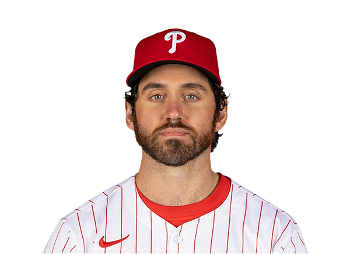 Jordan Romano, RP, Toronto Blue Jays: Like Jansen, Romano is a solid closer with job security, and is probably one of the stronger bets for 30-plus saves at the position for those reasons. The problem in his case, however, is that 2022 looks like his peak, he had a wide gap in terms of ERA/xERA (a 1.20 difference) and he surrendered a lot of hard contact. He therefore seems likely to take a small step backward.
Jordan Romano, RP, Toronto Blue Jays: Like Jansen, Romano is a solid closer with job security, and is probably one of the stronger bets for 30-plus saves at the position for those reasons. The problem in his case, however, is that 2022 looks like his peak, he had a wide gap in terms of ERA/xERA (a 1.20 difference) and he surrendered a lot of hard contact. He therefore seems likely to take a small step backward.
Romano has been going as the No. 4 reliever and No. 52 player overall selected on average in NFBC leagues thus far through March, however, meaning he's being regarded as one of the position's very best. He's plenty valuable, as you can see by my ranking (RP7/107 overall), but he's not someone I'd place in the position's upper tier.
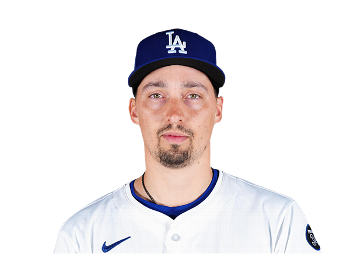 Blake Snell, SP, San Diego Padres: He has five consecutive seasons with at least a 30% strikeout rate, and his 3.19 Statcast expected ERA last year was almost spot-on to his 3.15 mark from his Cy Young 2018. But that's about where all the positives cease, as Snell has been held to 107, a prorated 135 (2020 pandemic year), 128 2/3 and 128 innings during the last four seasons, demonstrating extreme difficulty both staying healthy and pitching deep into games. During those four seasons, he has a combined 25 wins and 28 quality starts, totals that have in both categories been exceeded by the likes of Brad Keller, Eric Lauer, Jordan Lyles, Wade Miley, Mike Minor and Martin Perez.
Blake Snell, SP, San Diego Padres: He has five consecutive seasons with at least a 30% strikeout rate, and his 3.19 Statcast expected ERA last year was almost spot-on to his 3.15 mark from his Cy Young 2018. But that's about where all the positives cease, as Snell has been held to 107, a prorated 135 (2020 pandemic year), 128 2/3 and 128 innings during the last four seasons, demonstrating extreme difficulty both staying healthy and pitching deep into games. During those four seasons, he has a combined 25 wins and 28 quality starts, totals that have in both categories been exceeded by the likes of Brad Keller, Eric Lauer, Jordan Lyles, Wade Miley, Mike Minor and Martin Perez.
There's something to be said for Snell's per-batter fantasy production, but there's also something to be said for pitchers who provide more volume.
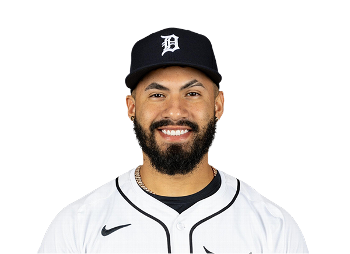 Gleyber Torres, 2B, New York Yankees: It pains me to put him on here, especially considering he set personal bests with his Statcast Barrel (10.7%) and hard-hit rates (45.3%) last season, but Torres is increasingly seeming like a man without a position in New York. Anthony Volpe's eye-opening spring has crowded the Yankees infield, DJ LeMahieu is currently healthy and needs a place to play, and Torres himself was rumored to be involved in trade talks at the 2022 deadline to acquire pitching.
Gleyber Torres, 2B, New York Yankees: It pains me to put him on here, especially considering he set personal bests with his Statcast Barrel (10.7%) and hard-hit rates (45.3%) last season, but Torres is increasingly seeming like a man without a position in New York. Anthony Volpe's eye-opening spring has crowded the Yankees infield, DJ LeMahieu is currently healthy and needs a place to play, and Torres himself was rumored to be involved in trade talks at the 2022 deadline to acquire pitching.
Without a committed place to play daily, Torres' fantasy appeal takes a hit -- a problem for a player who only barely cracked the positional top-10 last season. If he's traded, it's also important to consider that he has a career OPS 59 points higher at Yankee Stadium than on the road, and a HR rate 1.3% higher there than on the road.
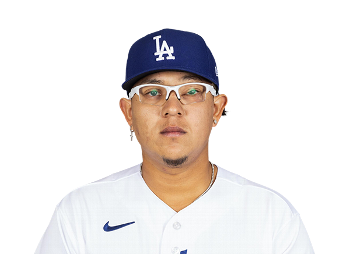 Julio Urias, SP, Los Angeles Dodgers: A member of last year's list, Urias' true ERA (2.16) beat his Statcast expected ERA (2.81) for the fourth consecutive season in 2022, so naturally he's proven an ability to do so again, right? Well, maybe. Yes, he has been one of the better pitchers in baseball at suppressing hard contact. Still, Urias' penchant for "swings and misses" falls short of some of the similar arms drafted around him on average, as his 12.4% swinging-strike rate over the last two seasons is only a hair above the league's average, nor does he have a batted-ball distribution (40.0% GB, 28.5% FB rates last year) that inspires confidence should he lose any of his command.
Julio Urias, SP, Los Angeles Dodgers: A member of last year's list, Urias' true ERA (2.16) beat his Statcast expected ERA (2.81) for the fourth consecutive season in 2022, so naturally he's proven an ability to do so again, right? Well, maybe. Yes, he has been one of the better pitchers in baseball at suppressing hard contact. Still, Urias' penchant for "swings and misses" falls short of some of the similar arms drafted around him on average, as his 12.4% swinging-strike rate over the last two seasons is only a hair above the league's average, nor does he have a batted-ball distribution (40.0% GB, 28.5% FB rates last year) that inspires confidence should he lose any of his command.
Additionally, the Dodgers actually dialed his innings total down last year, casting doubts upon whether he'll ever be trusted with a 200-frame campaign. Urias is a very, very good pitcher, but he's not a top-15 fantasy starter for me, despite the fact that he's often ranked or drafted as one.
